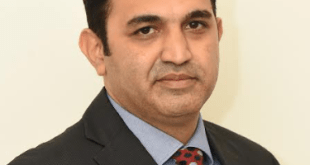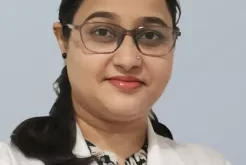As the world observes World Lymphoma Awareness Day on September 15th, it’s a timely reminder of the ongoing battle against lymphomas, a group of cancers affecting the lymphatic system, especially for those with B-cell lymphoma. Imagine a seemingly healthy individual suddenly facing unexplained fatigue and swelling—could this be a sign of something more serious? In India, where healthcare challenges continue to grow, B-cell lymphoma stands out as a significant concern among blood cancers. Once seen as a daunting blood cancer, especially its most aggressive form, Diffuse Large B-Cell Lymphoma (DLBCL), new treatment breakthroughs coupled with rising Indian-led clinical data are ushering in renewed optimism.
B-Cell Lymphoma in India: what you should know?
B-cell lymphoma arises from abnormal growth in B lymphocytes, crucial cells in the immune system that help fight infections. Predominantly, diffuse large B-cell lymphoma (DLBCL) emerges as the most common subtype in India. A comprehensive study from a major Mumbai referral center found that B-cell NHL accounted for around 85 % of NHL cases, with DLBCL being the most prevalent subtype, followed by follicular lymphoma, mantle cell lymphoma, and others. This aggressive form can develop in lymph nodes or other organs, spreading if not addressed promptly. Research from institutions like the All India Institute of Medical Sciences (AIIMS) underscores how environmental and genetic influences contribute to its prevalence in the Indian population. Early awareness is key, especially as urban lifestyles and increasing pollution levels may play a role in its incidence.
Main Subtypes of B-Cell Lymphoma Found in India
- Diffuse Large B-Cell Lymphoma (DLBCL)– The most common and aggressive subtype; includes further classifications like germinal center and activated B-cell types.
- Follicular Lymphoma (FL)– Less common and typically indolent, but still significant in Indian cases.
- Mantle Cell Lymphoma (MCL)– A more aggressive form marked by unique genetic signatures.
- Marginal Zone Lymphomas,Burkitt Lymphoma, CLL/SLL, and rare variants – Together they contribute to the remaining B-cell cases.
Key B-Cell Lymphoma Symptoms to Watch For
Recognizing symptoms early can make a world of difference in managing B-cell lymphoma. Common signs include painless swelling of lymph nodes, often noticed in the neck, armpits, or groin areas. Patients may experience persistent fever, drenching night sweats, and unexplained weight loss, collectively known as B symptoms. Fatigue that lingers despite rest, along with a fast-growing mass in the abdomen or chest, are also red flags. In some cases, itchiness or loss of appetite accompanies these issues. According to insights from the Indian Council of Medical Research (ICMR), these manifestations vary but often prompt individuals to seek medical advice, leading to timely diagnosis through biopsies and imaging.
Causes and Risk Factors
While the exact causes of B-cell lymphoma remain under investigation, several factors increase susceptibility. Genetic predispositions, where certain mutations affect B-cell development, are noted in epidemiological studies from Indian oncology centers. Immune system dysfunction, such as in autoimmune conditions, weakens defenses and heightens risk. Infections from viruses or bacteria can trigger abnormal cell growth, as observed in real-world data from hospitals across the country. Environmental exposures, including chemicals in agriculture or urban pollutants, are additional contributors, particularly relevant in India’s diverse settings. Age plays a role too, with risks rising after 60, and men facing a slightly higher likelihood. Family history of lymphomas further elevates concern, emphasizing the need for vigilance in high-risk groups.
Breakthroughs in Treatment
In the past decade, oncology has made remarkable progress, transforming how we understand and treat cancer compared to 20 or 30 years ago. Recent years have witnessed transformative progress in treating B-cell lymphoma, offering patients in India access to cutting-edge therapies. One standout development is the indigenous CAR-T cell therapy, such as NexCAR19, which reprograms a patient’s immune cells to target cancer effectively. Approved for relapsed or refractory B-cell lymphomas, this approach has shown promising results in clinical settings, as detailed in reports from Indian healthcare institutions. Another innovation is the dual CAR-T therapy, successfully implemented in India, providing hope for those with resistant DLBCL.
Additionally, novel drugs like Polatuzumab, combined with standard chemotherapy, mark a significant advancement after decades without major updates in first-line treatments. Available in Indian hospitals, this therapy enhances outcomes for newly diagnosed patients. Qartemi, a CAR-T option for adult B-cell non-Hodgkin lymphoma, further expands options. Studies on treatment outcomes from tertiary care centers, including those published in the Indian Journal of Cancer, highlight improved responses with these personalized immunotherapies, reducing reliance on traditional regimens alone.
Prevention Strategies
Though not entirely preventable, adopting healthier habits can lower risks associated with B-cell lymphoma. Maintaining a balanced diet rich in fruits, vegetables, and whole grains supports immune health, while regular exercise helps manage weight and reduce inflammation. Avoiding exposure to harmful chemicals, such as pesticides, is advisable, especially in rural areas. Staying up-to-date with vaccinations and managing chronic infections promptly can mitigate triggers. Routine health check-ups, particularly for those with family histories or autoimmune issues, enable early detection. Awareness campaigns aligned with World Lymphoma Awareness Day encourage community-level education, fostering proactive steps in India’s healthcare landscape.
Dr. Priyatesh Dwivedi, Haemato-Oncology and Bone Marrow Transplant, HCG Cancer Centre, Nasik
 Newspatrolling.com News cum Content Syndication Portal Online
Newspatrolling.com News cum Content Syndication Portal Online







